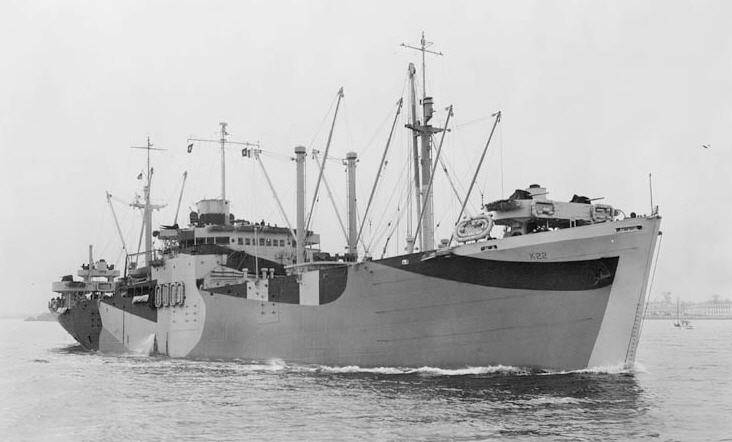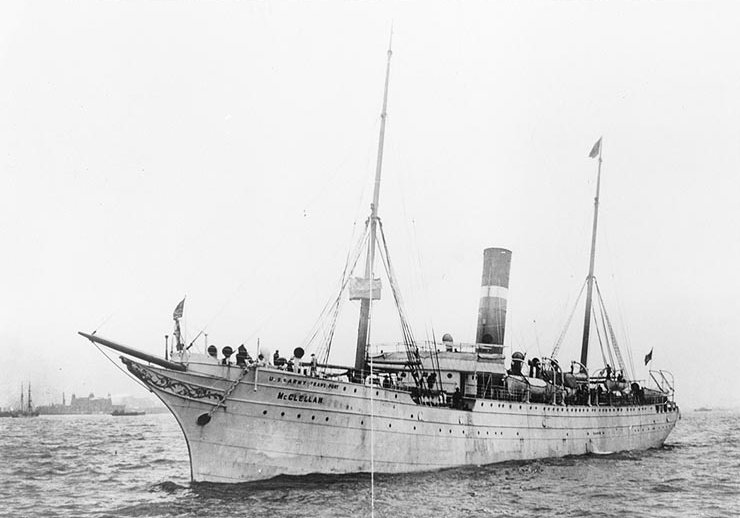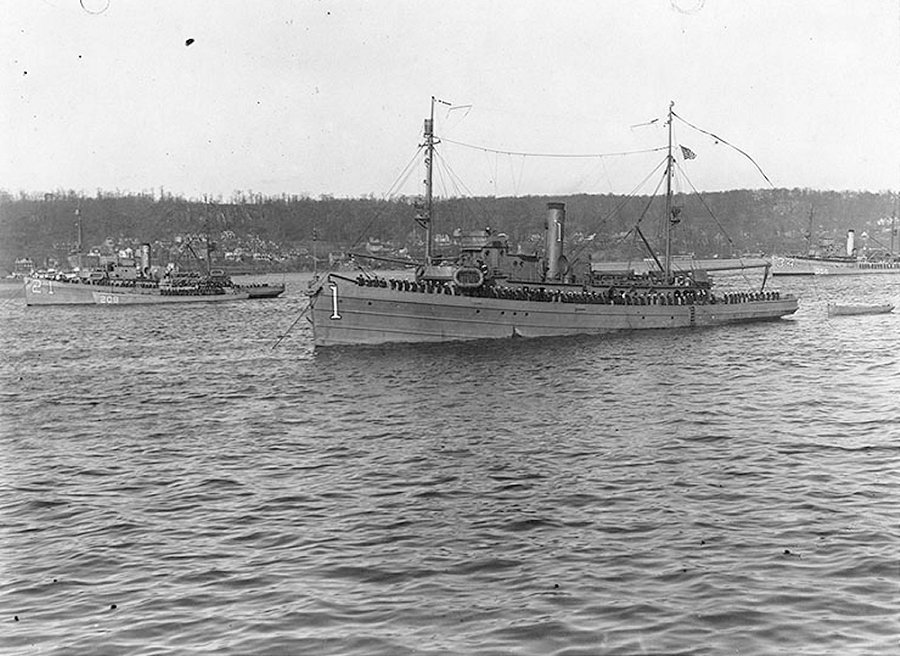|
Bethlehem Mariners Harbor
USS ''Bache'', Bethlehem Staten Island first Fletcher-class destroyer built in 1942 Bethlehem Staten Island also called Bethlehem Mariners Harbor was a large shipyard in Mariners Harbor, Staten Island, New York. The shipyard started building ships for World War II in January 1941 under the Emergency Shipbuilding Program and as the result of the Two-Ocean Navy Act of July 1940. The shipyard was part of the Bethlehem Shipbuilding Corporation which built ships for the United States Navy, and the United States Maritime Commission. Bethlehem Steel purchased the shipyard in June 1938 from United Shipyards. Bethlehem Shipbuilding Corporation closed the shipyard in 1959. The propeller factory and foundry continued operation for 10 more years at the site. Since 1980 the site is the May Ship Repair Contracting Corporation next to Shooters Island at the southern end of Newark Bay, off the North Shore. Staten Island Shipbuilding The site started in 1903, when William Burlee built a shi ... [...More Info...] [...Related Items...] OR: [Wikipedia] [Google] [Baidu] |
USS Bache (DD-470) Underway At Sea, In The 1960s
Three ships associated with the United States Navy have been named ''Bache''. * , a United States Coast and Geodetic Survey survey ship named for Alexander Dallas Bache Alexander Dallas Bache (July 19, 1806 – February 17, 1867) was an American physicist, scientist, and surveyor who erected coastal fortifications and conducted a detailed survey to map the mideastern United States coastline. Originally an army ..., former Superintendent of the Coast Survey, which was assigned to temporary duty with the U.S. Navy between January and June 1898. * , a United States Coast and Geodetic Survey survey ship named for Alexander Dallas Bache, former Superintendent of the Coast Survey, which served as a patrol vessel in the U.S. Navy from 24 September 1917 to 1 April 1919 and then was returned to the U.S. Coast and Geodetic Survey. * , named for Commander George M. Bache, a destroyer in commission from 1942 to 1968. {{DEFAULTSORT:Bache United States Navy ship names ... [...More Info...] [...Related Items...] OR: [Wikipedia] [Google] [Baidu] |
Shooters Island
Shooters Island is a uninhabited island at the southern end of Newark Bay, off the North Shore of Staten Island in New York City. The boundary between the modern states of New York and New Jersey runs through the island, with a small portion on the north end of the island belonging to the nearby cities of Bayonne and Elizabeth in New Jersey and the rest since 1898, as a part of the borough of Staten Island in New York City of New York state. In colonial era times Shooters Island was used as a hunting preserve for colonists of nearby Province of New Jersey and New York Province and New York Town across the bays / harbors. During the American Revolutionary War (1775-1783), Commanding General George Washington and his Continental Army used the island as a drop-off point for messages, and the place became a suitable isolated haven for spies. Following the war, the island's large oyster beds were heavily harvested, ultimately exhausted from over harvesting by the 19th cen ... [...More Info...] [...Related Items...] OR: [Wikipedia] [Google] [Baidu] |
Type B Ship
The Type B ship is a United States Maritime Administration (MARAD) designation for World War II barges. Barges are very low cost to build, operate, and move, and can transport bulky cargo. Because barges lack engines for self-propulsion, they are usually moved by a tugboat, some classed as Type V ships. Once the barge is moved into position, the tugboat departs and can do another task. This means there is no immediate rush to load or unload the barge. Toward the end of World War II, some ships that had not been completed in time for the war were converted into barges. US Navy water barges are given the hull classification symbols YWN or YW. Some barge classification symbols contain -N, indicating that the barge was not self-propelled. Due to the shortage of steel during World War II, concrete ship constructors were given contracts to build ferrocement barges for oil or gasoline, which were given the hull symbols YO, YOG, and YOGN; built in 1944 and 1945, some were named after c ... [...More Info...] [...Related Items...] OR: [Wikipedia] [Google] [Baidu] |
List Of Destroyer Classes Of The United States Navy
A list is a set of discrete items of information collected and set forth in some format for utility, entertainment, or other purposes. A list may be memorialized in any number of ways, including existing only in the mind of the list-maker, but lists are frequently written down on paper, or maintained electronically. Lists are "most frequently a tool", and "one does not ''read'' but only ''uses'' a list: one looks up the relevant information in it, but usually does not need to deal with it as a whole".Lucie Doležalová,The Potential and Limitations of Studying Lists, in Lucie Doležalová, ed., ''The Charm of a List: From the Sumerians to Computerised Data Processing'' (2009). Purpose It has been observed that, with a few exceptions, "the scholarship on lists remains fragmented". David Wallechinsky, a co-author of '' The Book of Lists'', described the attraction of lists as being "because we live in an era of overstimulation, especially in terms of information, and lists help us ... [...More Info...] [...Related Items...] OR: [Wikipedia] [Google] [Baidu] |
Type C1 Ship
Type C1 was a designation for cargo ships built for the United States Maritime Commission before and during World War II. Total production was 493 ships built from 1940 to 1945. The first C1 types were the smallest of the three original Maritime Commission designs, meant for shorter routes where high speed and capacity were less important. Only a handful were delivered prior to Pearl Harbor. But many C1-A and C1-B ships were already in the works and were delivered during 1942. Many were converted to military purposes including troop transports during the war. The Type C1-M ship was a separate design, for a significantly smaller and shallower draft vessel. This design evolved as an answer to the projected needs for military transport and supply of the Pacific Ocean theater of World War II. Type C1 ships under the control of the British Ministry of War Transport took an Empire name even if built with another name e.g. ''Cape Turner''. Origins The United States Maritime Comm ... [...More Info...] [...Related Items...] OR: [Wikipedia] [Google] [Baidu] |
Naval Act Of 1938
The Naval Act of 1938, known as the Second Vinson Act, was United States legislation enacted on May 17, 1938, that "mandated a 20% increase in strength of the United States Navy",J. David Rogers, "Development of the World's Fastest Battleships", The Second Vinson Act (1938) accessed August 8, 2012 allocating $1.09 billion (equivalent to $ in relative to GDP inflation) for it. It represented the United States' response to the Japanese invasion of China, the German annexation of Austria and the disintegration of the naval treaty system established in 1922 when both Japan and Italy refused to sign the ... [...More Info...] [...Related Items...] OR: [Wikipedia] [Google] [Baidu] |
The New York Times
''The New York Times'' (''NYT'') is an American daily newspaper based in New York City. ''The New York Times'' covers domestic, national, and international news, and publishes opinion pieces, investigative reports, and reviews. As one of the longest-running newspapers in the United States, the ''Times'' serves as one of the country's Newspaper of record, newspapers of record. , ''The New York Times'' had 9.13 million total and 8.83 million online subscribers, both by significant margins the List of newspapers in the United States, highest numbers for any newspaper in the United States; the total also included 296,330 print subscribers, making the ''Times'' the second-largest newspaper by print circulation in the United States, following ''The Wall Street Journal'', also based in New York City. ''The New York Times'' is published by the New York Times Company; since 1896, the company has been chaired by the Ochs-Sulzberger family, whose current chairman and the paper's publ ... [...More Info...] [...Related Items...] OR: [Wikipedia] [Google] [Baidu] |
Edward P
Edward is an English male name. It is derived from the Anglo-Saxon name ''Ēadweard'', composed of the elements '' ēad'' "wealth, fortunate; prosperous" and '' weard'' "guardian, protector”. History The name Edward was very popular in Anglo-Saxon England, but the rule of the Norman and Plantagenet dynasties had effectively ended its use amongst the upper classes. The popularity of the name was revived when Henry III named his firstborn son, the future Edward I, as part of his efforts to promote a cult around Edward the Confessor, for whom Henry had a deep admiration. Variant forms The name has been adopted in the Iberian peninsula since the 15th century, due to Edward, King of Portugal, whose mother was English. The Spanish/Portuguese forms of the name are Eduardo and Duarte. Other variant forms include French Édouard, Italian Edoardo and Odoardo, German, Dutch, Czech and Romanian Eduard and Scandinavian Edvard. Short forms include Ed, Eddy, Eddie, Ted, Teddy an ... [...More Info...] [...Related Items...] OR: [Wikipedia] [Google] [Baidu] |
Morse Dry Dock And Repair Company
The Morse Dry Dock and Repair Company was a major late 19th/early 20th century ship repair and conversion facility located in New York City. Begun in the 1880s as a small shipsmithing business known as the Morse Iron Works, the company grew to be one of America's largest ship repair and refit facilities, at one time owning the world's largest floating dry dock. In addition to servicing some of the largest steamships of the era, the company maintained many of the yachts of New York's elite business community, and also occasionally built small watercraft such as tugboats. During World War I, the company was heavily engaged in work for the Federal government of the United States, U.S. government and military. In 1929, the company merged with five other major New York ship repair facilities to become United Dry Docks, Inc.—the largest company of its type in the world—with the former head of Morse Dry Dock, Edward P. Morse, as chairman of the board. United Dry Docks late ... [...More Info...] [...Related Items...] OR: [Wikipedia] [Google] [Baidu] |
Submarine Chaser
A submarine chaser or subchaser is a type of small naval vessel that is specifically intended for anti-submarine warfare. They encompass designs that are now largely obsolete, but which played an important role in the wars of the first half of the 20th century. Many of the American submarine chasers used in World War I found their way to Allies (World War II), Allied nations by way of Lend-Lease in World War II. Submarine chaser variants U.S. Navy submarine chasers were designed specifically to destroy German Empire, German submarines in World War I, and Empire of Japan, Japanese and Nazi Germany, German submarines in World War II. The small SC-1-class submarine chasers of the design used in World War I carried the hull designator SC (for Submarine Chaser). Their main weapon was the depth charge. They also carried machine guns and anti-aircraft guns. The similar-sized SC-497-class submarine chaser, SC-497-class was built for World War II. Also in World War II, larger PC-461-cla ... [...More Info...] [...Related Items...] OR: [Wikipedia] [Google] [Baidu] |
Lapwing-class Minesweeper
The ''Lapwing''-class minesweeper, often called the Bird class, was an early "AM-type" oceangoing minesweeper of the United States Navy. Seven ships of the class were commissioned during World War I, and served well into the 1950s. A number were refitted to serve as ocean-going tugboat, tugs, Salvage tug, salvage vessels, seaplane tenders, or submarine rescue ships. The propulsion system consisted of 2 Babcock & Wilcox 200psi boilers and a 1,400shp Harlan and Hollingsworth triple expansion reciprocating steam engine. Ships The table makes no distinction between classification as "Minesweeper No. X" and "AM-X". This change affected all boats equally ca. 1920. All boats reclassified as Fleet Tugs (AT) where later again reclassified as Fleet Tug, Old (ATO) (ca. 1944). The table treats them the same. Brant and Grebe were never reclassified as ATO. References External links * USN Ships {{WWII US ships Mine warfare vessel classes Lapwing-class minesweepers, World War ... [...More Info...] [...Related Items...] OR: [Wikipedia] [Google] [Baidu] |
World War I
World War I or the First World War (28 July 1914 – 11 November 1918), also known as the Great War, was a World war, global conflict between two coalitions: the Allies of World War I, Allies (or Entente) and the Central Powers. Fighting took place mainly in European theatre of World War I, Europe and the Middle Eastern theatre of World War I, Middle East, as well as in parts of African theatre of World War I, Africa and the Asian and Pacific theatre of World War I, Asia-Pacific, and in Europe was characterised by trench warfare; the widespread use of Artillery of World War I, artillery, machine guns, and Chemical weapons in World War I, chemical weapons (gas); and the introductions of Tanks in World War I, tanks and Aviation in World War I, aircraft. World War I was one of the List of wars by death toll, deadliest conflicts in history, resulting in an estimated World War I casualties, 10 million military dead and more than 20 million wounded, plus some 10 million civilian de ... [...More Info...] [...Related Items...] OR: [Wikipedia] [Google] [Baidu] |





